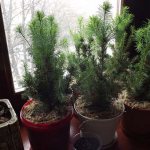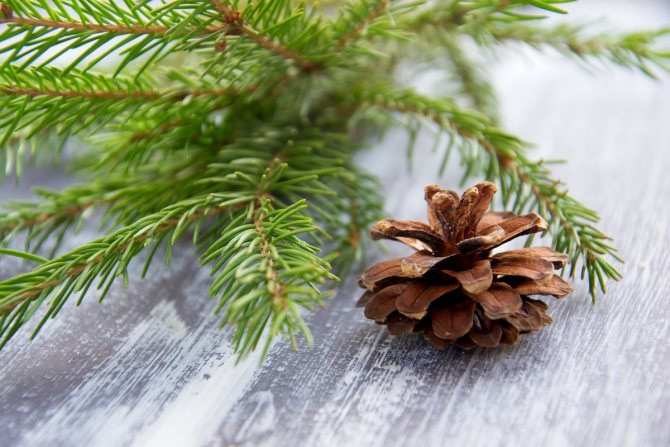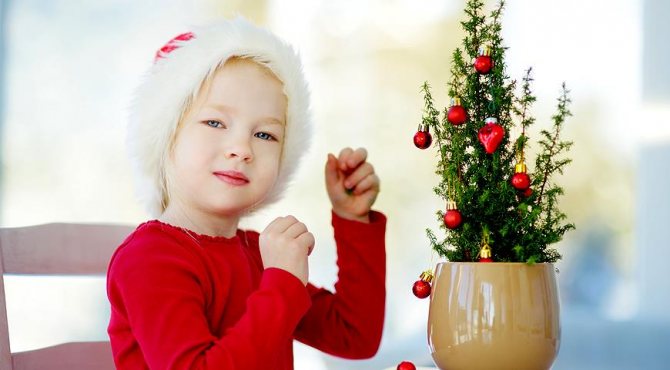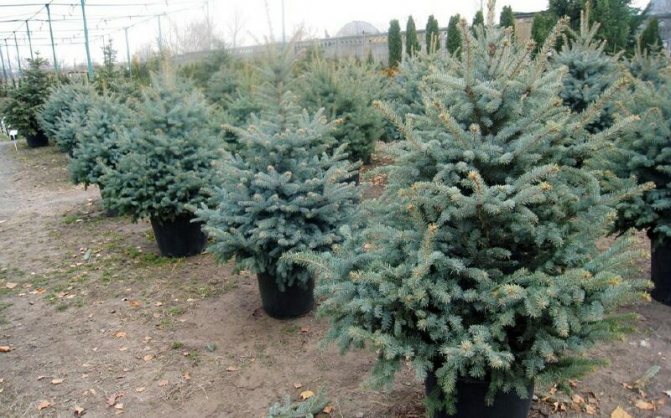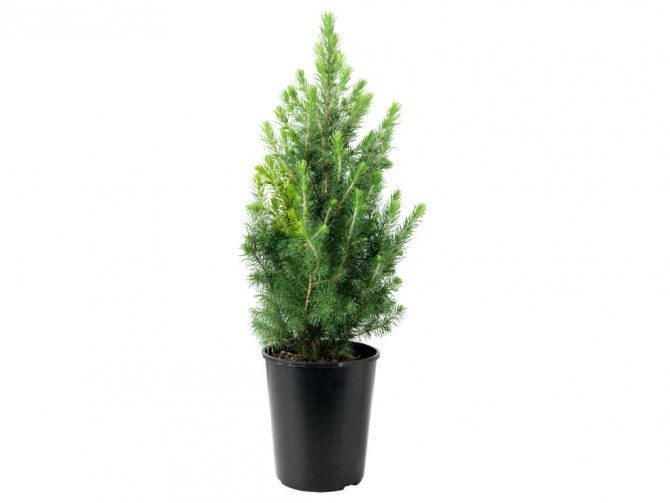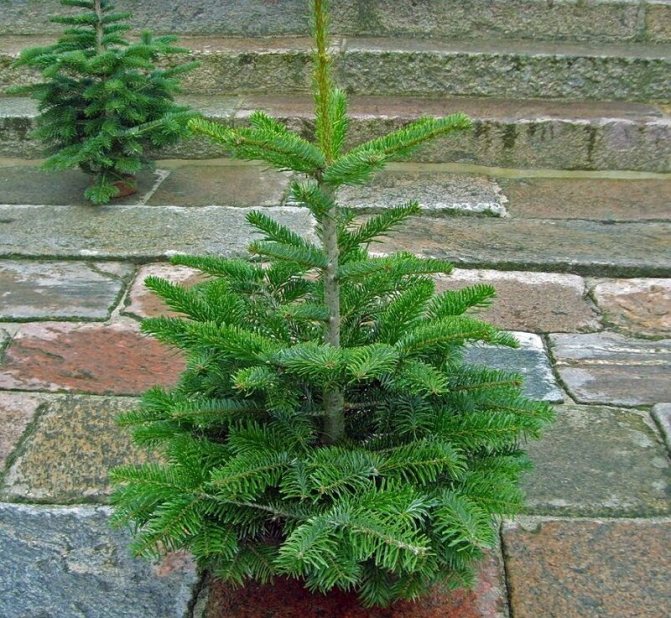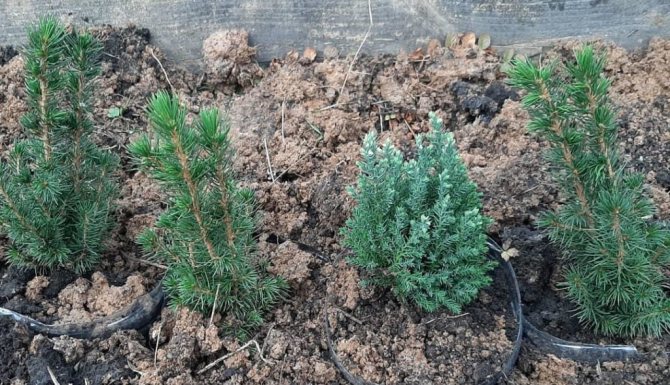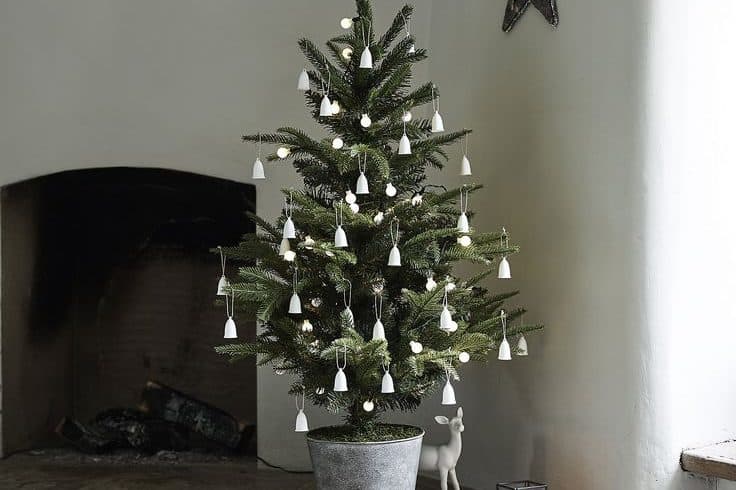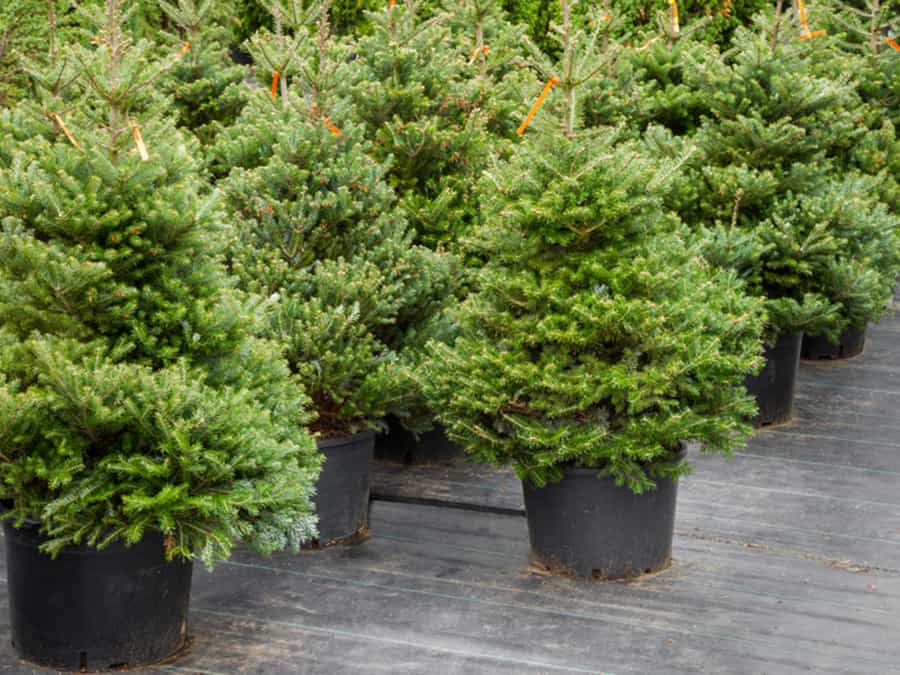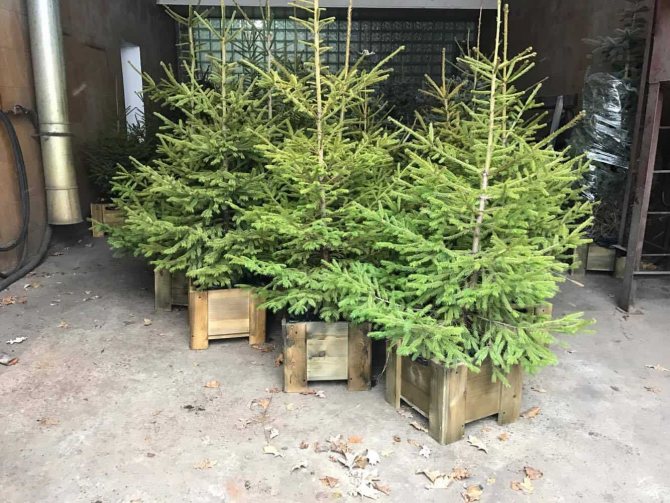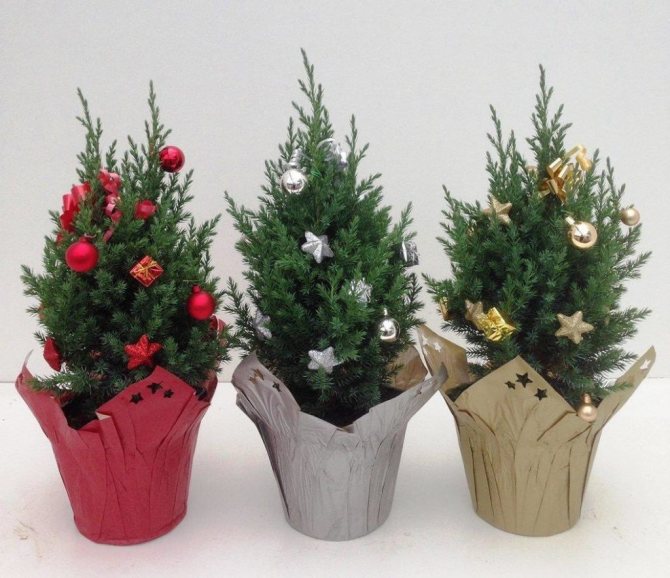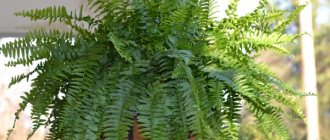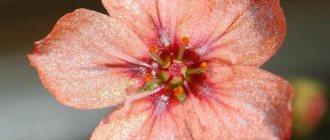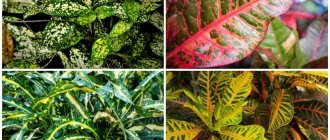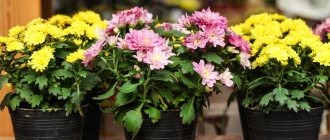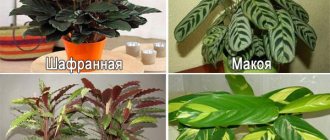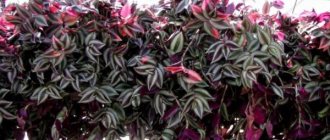Now it has become popular to give the most unusual gifts for the New Year. A Canadian Conica spruce seedling (Picea glauca Conica) is not the most win-win option for those who do not have a land plot, but really want to have such a houseplant? Perhaps, but you should immediately familiarize yourself with the basic rules for caring for spruce at home, because growing it at home is not so easy.
By the way! If you need material for planting Koniki in open ground and further caring for the ephedra in the garden (not at home!), it will be useful for you This article.
Which spruce is better to buy?
Dwarf spruce or fir species are best suited for container growing. If you still want a less traditional tree, look for dwarf junipers, pine, cypress or thuja. Of all conifers, European spruce (common) and cypress are best suited for growing at home. in containers. Canadian Konica spruce is also very popular for home cultivation.
Conifers of temperate latitudes are much more difficult to grow at home than southern species - cypress, juniper, cryptomeria, thuja, araucaria.
Canadian spruce Conic (Picea glauca Conica): description
Canadian spruce Conic (Picea glauca Conica) Is a dwarf coniferous plant with a regular conical (conical) crown shape.
Worth knowing! When you buy a very short young seedling, it does not have a conical shape and its needles are quite rare. But every year Konica will become denser and with time it will acquire the necessary conical shape!
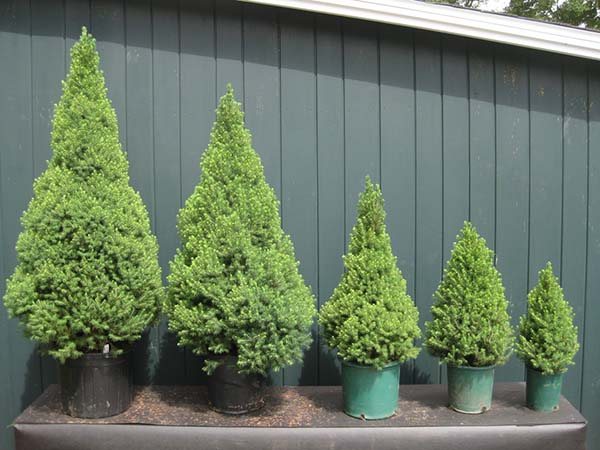
Key characteristics of Canadian Konica spruce:
- Needles - soft, light green.
- Annual growth in height - 4-10 cm, width 3-5 cm.
Note! If you decide to grow Konica at home, then you should know that it will give a maximum of 4-5 cm of annual growth.
- Maximum height - 3-4 meters with a crown diameter (width) of 2 meters.
According to experimental data, at 35 years old, some specimens reach a height of 3.6 meters, and at 60 years - 4 meters.
Requirements for growing Canadian Konica spruce:
- Shine - according to some sources, it is photophilous, but easily tolerates partial shade. It grows well in sunny places, but is very prone to sunburn (it will burn on the sunny side without shelter or shading).
As a rule, in diffused light or partial shade, Konica grows (behaves, more precisely, feels) much better than in bright light
- Moisture - sensitive to drought.
- The soil - Poorly tolerates soil compaction and waterlogging (moisture stagnation).
- Care and protection - protection from strong winds and from winter and early spring sunlight is required (in other words, it should be covered).
- Frost resistance - very frost-resistant (USDA zone 3 - up to -37.2 ..- 39.9 degrees).
How to care for a live Christmas tree at home?
After purchasing, give the tree a few days to adapt to the conditions of the apartment. Then the tree should be transplanted into a new pot, 8-10 cm larger than the previous one.
Transfer
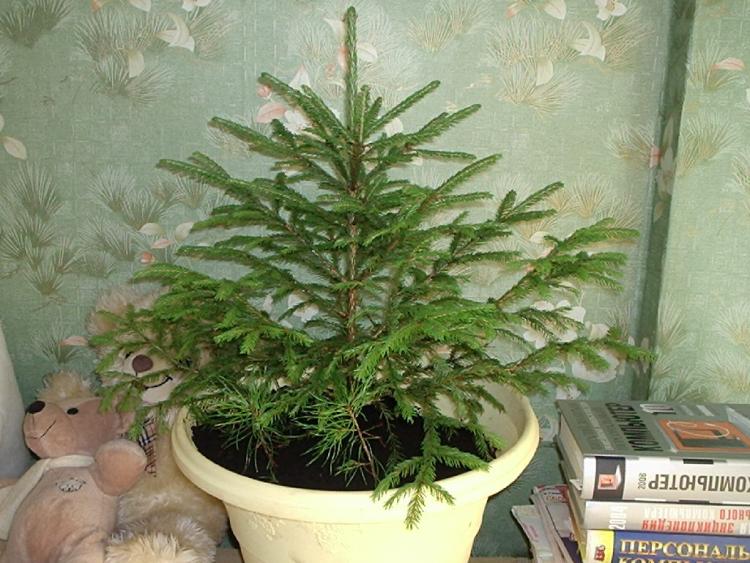

For planting, prepare a loose soil mixture with the addition of peat or buy ready-made soil for conifers, it should be acidic based on peat. It is even better to collect soil from the forest under the spruce with rotted fallen needles, which already have the necessary acidity and contain tannins that inhibit the development of diseases.
- Before transplanting, water the tree well and carefully remove it from the pot, being careful not to damage the earthen ball.
- Pour about 4 cm of drainage into the bottom of the new pot.
- Plant the tree at the same level, adding soil only along the edge of the pot and being careful not to deepen the root collar.
Top dressing is allowed no earlier than a month later, and even better in spring, when the dormant period ends and the Christmas tree starts to grow. Use only special fertilizer for conifers.
How to water?
Keep the soil constantly moist, but do not overflow. Water the green beauty every second day in small portions so that the soil has time to dry out a little. In this case, the water must be soft or settled. To strengthen the needles, sometimes add a little lemon juice to the water. (0.5 teaspoon per 5 liters of water). To increase moisture, spray water around the tree several times a day. You can buy an automatic air humidifier.
The soil around the trunk can be covered with sphagnum moss to moisturize the base. Just remember to change it periodically.
Lighting
Choose the most illuminated place for the tree. It is better to keep it not in the back of the room, but on a bright glazed balcony or terrace at a temperature of 6 to 10 ° C. If the conditions for the plant are unfavorable, the needles will begin to turn yellow and fall off, and this is an alarming signal. It will no longer be possible to restore the fallen needles.
How to choose a plant
It must be remembered that if you grow a coniferous tree in a pot, then its height will be 15-30 cm, while in open soil, the height can reach 2 meters (usually about 170 cm). Therefore, if you decide to purchase a Christmas tree in a pot, the following factors should be considered:
- Pot size - if the pot is small relative to the crown of the tree, then the roots were cut off during transplantation. There is no point in buying such a plant, since it will die.
- Shoots at the ends of the tree - if in winter there are shoots at the ends of the spruce, then it was forcibly awakened. Soon the spruce will start to hurt.
- Decorations - if the tree is decorated with something (shiny spray or varnish), then the tree will die, since the pores of the needles will be clogged with aerosol. (But you can try to wash it off with warm water)
- Trunk position - if the trunk is poorly fixed in the soil and moves, then it has recently undergone a transplant. You should not take such a plant, because the transplant could be done incorrectly. The plant will die from this. Move the barrel carefully to check.
- The location of the roots in the pot - the roots should fill the entire volume of the pot, this will mean that the spruce has not been transplanted. To check, you need to dig out the soil a little, while note that it should be slightly damp.
- Frost resistance - frost resistance should be 1-2 values higher than your zone. Therefore, if you have a 6th zone, then you need to take spruce for 5 or 4 zones. Check with the seller for this information.
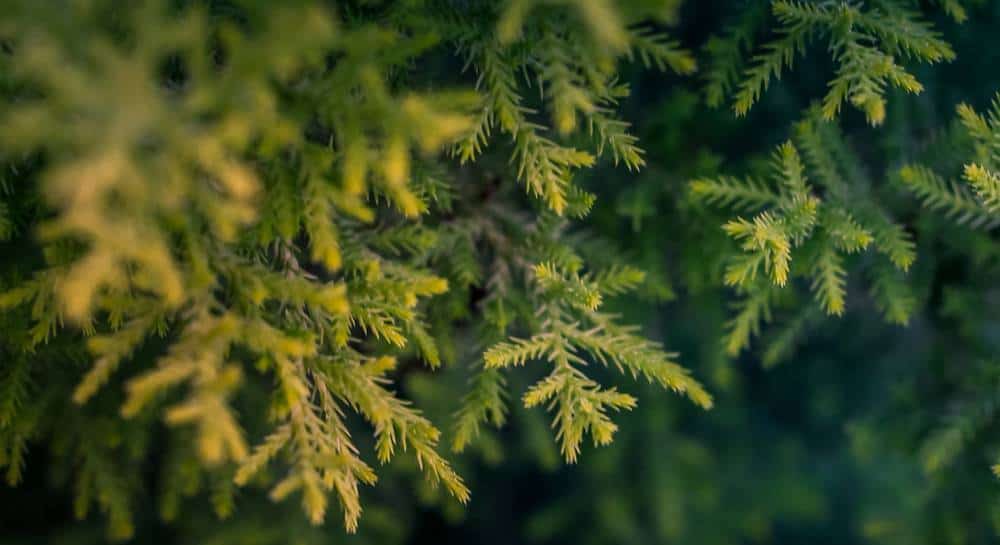

For the Russian climate in terms of frost resistance, the following are perfect:
- German common spruce
- dwarf fir
- serbian spruce
- conic spruce
- western thuja
- decorative blue spruce
Is it possible to decorate a decorative tree on New Year's holidays?
For the New Year, a container spruce can be decorated with any decorations, but watch out for electric garlands - sometimes they get very hot and can burn the twigs.
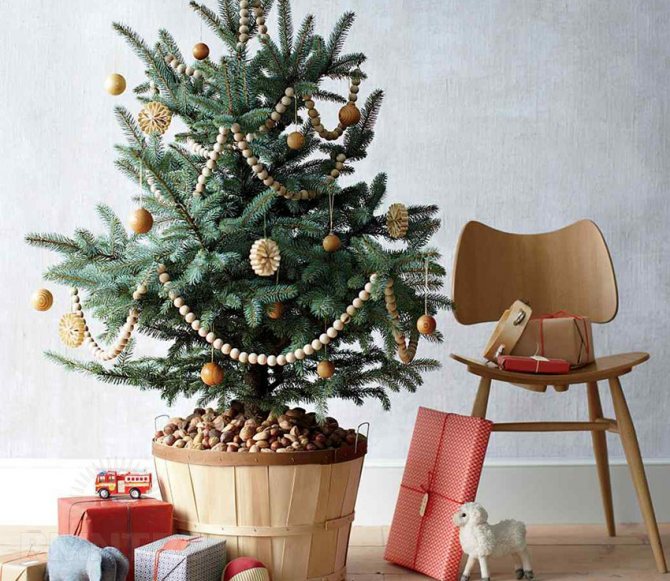

After the New Year holidays, it is good to place a container with a tree in the loggia, having previously insulated the container in which it grows. Otherwise, the root system, which is especially sensitive in tub plants, may freeze and your green beauty will die.
Every two to three years, the tree is transplanted into a new container, 2-3 cm larger than the previous one, with the addition of fresh soil.
An important feature: conifers do not tolerate excessive deepening. When transplanting, you need to make sure that the root collar is at the same level as before.
Features of individual varieties
Serbian (Balkan) spruce is considered the most slender among lovers of conifers.
Her decorative varieties Gnome (adult height up to 1.5 meters) and Nana (up to 3 meters high) look great on the New Year's holiday.
Among the blue (thorny) spruce trees in a pot, decorative varieties are in great demand:
- semi-dwarf Edith with harmonious shapes and blue-gray needles;
- Fat Albert with a bright color and regular crown;
- green with blue Glauka Globoza with a spherical crown.
Many Russian florists know how to care for the popular Canadian potted Konik tree. It grows very slowly, with an annual growth rate of up to 5 centimeters. Even in adulthood, the height of the plant rarely reaches one meter. The nutrient soil for the plant is earthen sod with an admixture of leaves, a small amount of peat and sand. Konica is less capricious than other varieties of conifers. It can grow in a tub (pot) for several years.
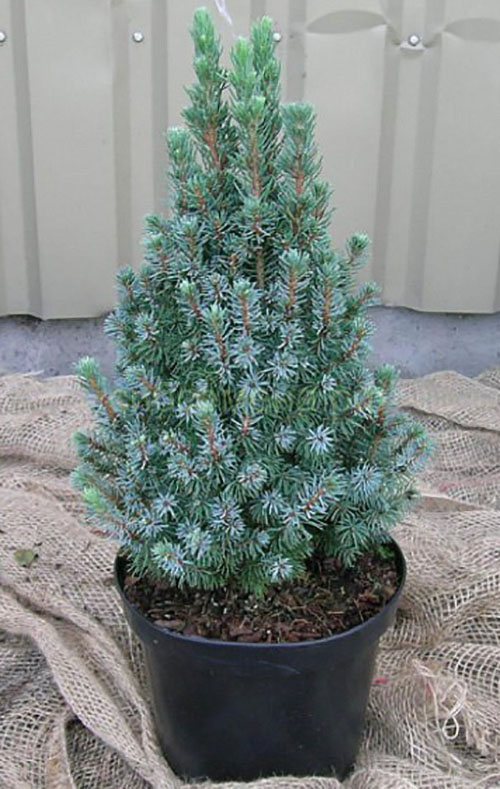

The analogue of the variety is the decorative Canadian cone-shaped Christmas tree in the Sanders Blue pot. The spruce has soft, bluish-blue needles, an annual growth of up to 7 centimeters. With proper care, it grows for 50 years, reaching a maximum height of 3 meters. Loves light, moist fertile soil. In open ground it can withstand frosts up to 40 degrees.
Miniature varieties of Korean fir fit well into the interior:
Caucasian and Danish fir varieties are distinguished by a strict conical shape, soft fluffy green needles. For the New Year, golden, erect, gray-gray varieties of fir are also installed.
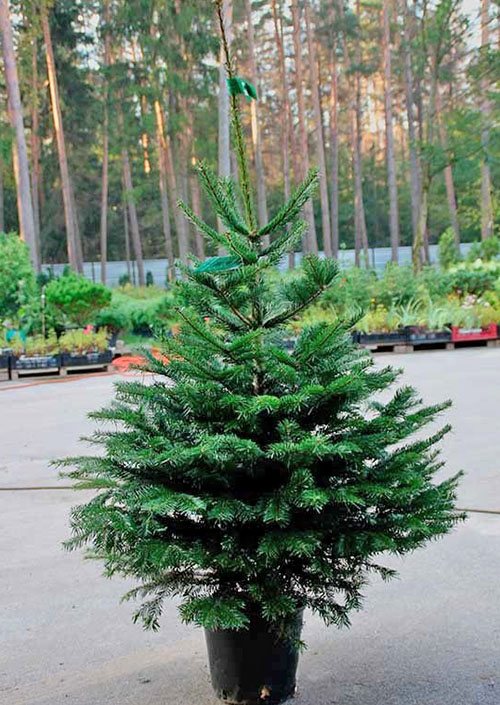

Danish farmers have successfully mastered the cultivation of the beautiful Nordman fir in tubs, which is in great demand in the capital cities on New Year's Eve.
Fir trees are unpretentious and durable. Home care consists in regular watering (without waterlogging), sufficient drainage of the soil. When planted in open ground, they grow up to 30 centimeters annually and can live up to 100 years.
The mountain fir Compact with flat needles, glossy silver overflow of needles is in great demand. Along with a well-proportioned tapered shape, the unusual color shades have made it the best selling live potted spruce in many regions.


The brightest of the blue thorny spruce trees, Hoopsie, the leader of New Year's celebrations in Europe. Its main advantages are a strict crown cone, silvery-blue needles. Loves light, frost-resistant, unpretentious in conditions of increased urban gas pollution and air pollution.
In a series of varieties of ordinary fir trees in a pot, the German spruce Kupressina stands out. She has an original tapered ovoid crown, emerald green color of needle-like needles. The variety has shown good resistance to snowstorms and snowfalls.
Criterias of choice
Healthy look... Choosing a "herringbone" in the store, give preference to healthy and strong (in appearance) specimens, with a moist substrate, without broken branches. This does not mean that the acquisition of a plant with several broken branches and a dried lump is excluded, but the risk that it will not survive increases significantly.
Choose healthy plants with no broken branches
Nice looks. When you choose a "herringbone" for temporary home decoration, it is not so important what genus and species the plant belongs to, the main thing is that you are satisfied with its appearance. If you plan to subsequently transplant the tree into the garden, then you should think about its specific characteristics in advance. What exactly needs to be taken into account, I will tell you a little later. In the meantime, we will find out how to extend the life of a coniferous plant in an apartment.
What to do with the plant after the holidays
But then the fireworks went off, the bells rang out and the traditional reception time was over ... We are wondering about the future of the coniferous tree.
Most of the potted "fir-trees" are open-ground plants, for their successful growth and development they need a cool winter and humid air. How cool is it and where to provide it - a window sill, a cold or insulated balcony (loggia), a winter garden, a summer cottage?
Now the knowledge of the species belonging to the “fir-tree” is extremely necessary for us, because by it we can judge the winter hardiness of the plant.Heat-loving plants are often on sale: 'Silvercrest' Italian pine, as well as "Turkish firs", one of the parents of which is Greek fir. Of course, such beauties from the far south will not survive the harsh winter of central Russia. The average temperature of their winter content ranges from + 4 ° C to + 10 ° C, which, of course, cannot be provided in residential premises.
Salvation for them can be a non-freezing balcony with the possibility of heating or (at worst) a staircase. Such a plant must be given the brightest place and ensure minimal watering, preventing the earthen coma from drying out.
If you decide to keep your "herringbone" in the apartment or plant your "herringbone" in the garden, first find out what kind and variety it is, understand whether this plant is winter-hardy
Please note that the overwhelming majority of potted "Christmas trees" are from Europe, which means that even winter-hardy species in the middle lane (which are still the majority among potted trees) in the first 2-3 winters in the garden will need shelter, because where they come from, winters much softer than Russian ones.
The wintering of cypress trees is quite problematic: K. Lavson, K. stupid and K. tuyiform (most often found as a New Year tree his cultivar 'Top Point'), Nordman fir (sellers call it Danish spruce) and P. one-color, folded thuja 'Gelderland', black pine 'Oregon Green', Chinese juniper 'Stricta', as well as popular in Europe Geldreich pines 'Malink', 'Compact Gem'.
My advice is that it is better to grow them in the southern regions of our country, but if you want to try to save the tree and plant it in central Russia, then they should be carefully buried in the snow and exclude the possibility of a burn in early spring.
In the first 2-3 years, a young plant will need shelter for the winter, even if it is suitable for your region in terms of winter hardiness.
We take out to the dacha
You can take out to the dacha the Fraser fir, the item of Arizona (sometimes it is considered as a kind of subalpine fir), the Scots pine, the western thistle, the rocky juniper ('Moonglow' and other cultivars), the Serbian spruce, e. The Canadian, e. The common, e. prickly. It is enough to simply bury them "headlong" in a snowdrift - if there are no serious thaws and subsequent severe frosts, the trees will winter well, and in spring they can be planted.
Keep in mind that spring dangers threaten the Canadian ‘Conica’ spruce, ‘Stricta’ Chinese juniper (early spring burns), subalpine fir and Siberian fir (damage to young shoots by late spring frosts). To prevent burns, it is advisable to put a shading shield or pre-wrap the plant with a shading net or burlap.
In spring, conifers must be protected from burns.
Digging in the shade is undesirable - there the snow lasts longer, which means that the growing season begins later. Temperature changes are extremely undesirable for any coniferous, therefore, before moving to the country, especially if there are severe frosts, it is better to overexpose the plant on a frost-free balcony for 3-5 days.
Representatives of decorative forms of spruce
Decorative forms of coniferous trees have consistently slow growth rates and small dimensions. Aesthetic appeal and practicality - these two principles, on which breeders were based, creating new subspecies of spruce, are fully embodied in representatives of popular breeds with a spherical, cushion or conical crown configuration.
Tufty, Cinderella, Petra, Hillside Upright, Emsland are the most attractive forms that delight the eye with golden-green and bluish shades of needles. Dwarf beauties have a dense compact crown, while the lower branches cover the near-trunk area of the earth.
Quite remarkable is Picea glauca with bluish needles and its varieties Conica, Cupido and Pixie, which gardeners consider to be the shortest forms.
Spring transplant
With the onset of warmth and sufficient thawing of the soil, you can transplant your winter beauty from a pot into open ground. It is advisable to do this before the plant begins to flow. A free, well-lit place is best suited for planting. We carry out the transplant sequentially:
- We are preparing a spacious pit so that the roots of a coniferous plant are spread freely, evenly in the prepared space.
- We lay a sand drainage with a depth of 20 centimeters at the bottom.
- We prepare an earthen mixture for backfill, consisting of two parts of turf, one part of peat and one sand.
- When installed in a hole, the root collar of the plant should be level with the ground.
- We fill up the hole, compacting the soil layer by layer.
Fertilizer when planting is used individually, taking into account the characteristics of the variety and the state of health of your tree.
Gradually, after each New Year, a new coniferous seedling will appear on the garden plot. The Christmas tree alley will delight your eyes and warm your soul for a long time.
Watering and feeding
Spruce is a capricious tree, so care for it must be correct, and especially watering. The earth ball must be constantly moist. Waterlogging or dryness can lead to the death of the plant. It is necessary to water the plant with the addition of mineral fertilizer from May to September. Fertilize twice a month. When the dormant period from November to March comes, completely cancel the fertilization.
In the winter period of rest, there should be special care for the spruce, if it is at home, it is imperative to spray on the needles from a fine sprayer if there are heating devices in the room.
Watering is reduced to 2 times a month, if the regime is observed from 5 to 15 degrees. If the spruce is in a cool room, in which the temperature is about 0 degrees, watering once a month will be enough.
Which live Christmas tree to choose for the New Year:


In nurseries and garden centers, you will be offered a choice of such common types of Christmas trees (they are all equally good and the choice will depend purely on your aesthetic preferences):
Nordman fir
The Nordmann fir (Abies nordmanniana) is most popular for its needles that fall slowly and you will find that the needles tend to stay in place even when the branches are dry, although they are less aromatic than Norwegian spruce.
Royal (blue) fir
Consider getting a noble fir (Abies procera), one of the best Christmas trees with a wonderful spruce scent and luxurious pine color. The king's fir has long silvery needles and short, stiff branches, making it ideal for New Year's decor.
Norwegian spruce
Norwegian spruce (Picea abies) is a controversial choice. The correct shape with sharp, light needles clearly speaks in its favor, but this spruce very quickly begins to shed its needles indoors.
It costs less than all other varieties, but it is recommended to keep it at home half as much as other types of live Christmas tree.
Douglas Fir
Douglas fir (Pseudotsuga menziesii) has soft, shiny green needles and a sweetish spruce aroma. Holds needles well.
Scots pine
Scots pine (Pinus sylvestris) is stocky but hardy and fragrant. This species is a versatile person, it should not shed the needles in the warmth (if it stands no more than 10 days in the room). It is ideal for later gardening.
Serbian spruce
The Serbian spruce (Picea omorika) is very lush with many branches pointing upwards, which form a beautiful, regular shape. Decorations on such a Christmas tree will look very beautiful, and it will be easy and pleasant to dress it up!
Blue spruce
Blue spruce (Picea pungens Glauca Group) is more expensive than others, but very spectacular and beautiful.
However, she has rather thick branches, so you will have to increase the loops on the decorations. However, they will support heavy jewelry without sagging.
Take a closer look at the tree itself, it should have:
- regular shape with straight, upward-looking branches.
- the tree should have one central leading branch pointing vertically upwards - avoid buying a tree with two leading branches.
- Do not buy spruce that has had its top cut off.
- In a healthy Christmas tree, the needles should be green and glossy, not crumbling from the touch of the hand or light shaking.
The most popular types of araucaria flower
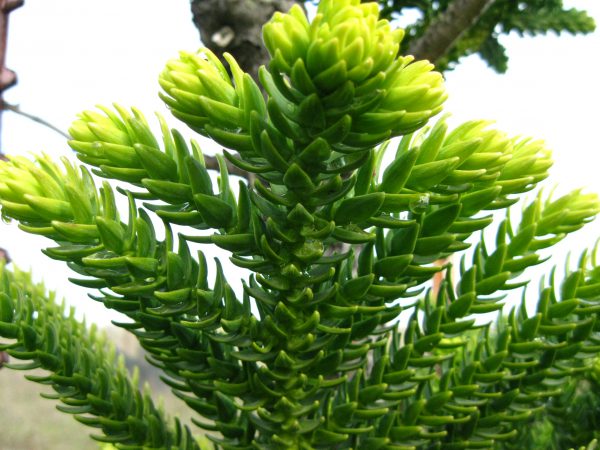

Nineteen different araucaria are known today. The following types are the most common.
Araucaria varifolia, otherwise called Norfolk pine, room spruce, is used for decoration and landscaping of premises. Norfolk is an area in the east of England with a special Pacific island climate. For a long time, the Norfolk pine was endemic. Later it was brought to Australia, where it also took root well. Grown in an apartment, greenhouse or office space, this pine has an elegant appearance: a pyramidal crown shape, dark, flaky bark and small light green needles. The noble resinous scent purifies the air.
Brazilian araucaria is of southern origin. Homeland - Southern Brazil. In the wild, such a tree can grow up to 50 m. Thin branches are densely overgrown with bright green lanceolate leaves. Its leaves do not exceed 5 cm in length.
Araucaria Cook (columnar) - endemic from New Caledonia, from Pine Island. It is characterized by short branches. They extend at right angles from the trunk. Often growing branches cover the entire tree and form a narrow crown shape. Long cones (10 cm) grow on the branches.
Chilean araucaria originally from Argentina. Most of it grows in Chile and western Argentina. This fairly large tree can grow up to sixty meters in height under favorable conditions. The trunk of such a giant can be one and a half meters in diameter. A young plant will have lower branches that lie on the ground. With the growth of the tree, they will disappear. And an adult plant will look like this: branches gather in whorls, are arranged horizontally, sometimes hanging a little. The foliage is dark green in color and becomes tough. In the place of growth, this plant is widely used as a building material; delicious, nutritious seeds are used in cooking. Its decorative properties allow it to be grown for landscaping public places.
Evergreen beauty spruce in landscape design
The evergreen spruce is a spectacular plant that lends a unique charm to any planting. The prickly beauty often becomes the accent of a landscape composition, creating a unique artistic effect, filling it with depth of color, volume, and setting a cozy and somewhat mysterious mood.
There are more than 50 species of this plant, common in the Northern Hemisphere. In nature, conifers grow in mountain forests, rarely found in flat areas.
Coniferous plants take root well on river banks, where they receive sufficient flowing moisture, avoiding highly waterlogged soils.
Common spruce (European), which is the main species for logging, is widespread in Russia.
Spruce in landscape design for relatively small areas is mainly used of medium-sized (10-15m in height) or dwarf species (up to 2.5 m), since traditional beauties can reach heights of 40-50m and above.
What can replace a Christmas tree?
In addition to Christmas trees, other conifers are also grown in pots: pine, fir, holly, sciadopitis and others. These trees grow very small and grow very slowly, which is a good substitute if you are not satisfied with a decorative spruce in a pot. Caring for a pine or fir is the same as for a Christmas tree. The only difference is that pine can withstand quite large frosts if the tree is hardened beforehand. Glauca Globosa.The height does not exceed one and a half meters. The needles are bluish in color, frost-resistant and unpretentious.
Montgomery. The height of such a spruce is about two meters. It tolerates drought, frost and pruning well. Spruce has an unusual color. Bluish needles at the tips of the branches, greener - closer to the trunk.
The New Year holidays are coming to an end, and it is a pity to throw away their main symbol - a fragrant live Christmas tree. Fans of flora in many countries liked the successful alternative - a tree in a pot. It can be stored indoors until the onset of heat, followed by transplanting on a personal plot of land.
In order for the plant to take root, develop normally, one should study and adhere to the basic rules of its acquisition and care.
Decorative spruce care
If you are interested in how to care for bunched spruce, then the care can be characterized as minimal. Home bunks do not require pruning, transplanting or additional crown maintenance. Despite its unpretentiousness, minor proper care will further ensure the preservation of the beauty of the conica tree.
- In not very hot and dry summers, moisture is provided due to natural precipitation.
- On hot days, water the plant regularly (as the top layer dries), while spraying the crown.
- Weekly watering is required for the first two months. If a crust forms on top of the soil, be sure to loosen the top layer.
- Сonica is resistant to frost, but, nevertheless, the first couple of years should be thoroughly mulched for the winter in the land in the area near the trunk.
Canadian spruce in a pot: reproduction
You can buy a ready-made seedling in the store, or you can try to grow a Christmas tree from seeds. The seeds are collected from the open cones of a vending Christmas tree.
The best time for this is November-February. To ensure high germination of seed, it is recommended to carry out stratification. For this, the seeds are soaked in ice water for 3 days. Some gardeners even add ice to their water.
After the seeds are swollen, they are kept in wet sand at 0 ° C. With this method, the highest possible seed germination is ensured. Sow them to a depth of 0.5 cm. Until shoots appear, the pot should be in a well-ventilated cool place.
Remember that under natural conditions, spruce grows in early spring under snow. Further care - watering, feeding. Depending on the growing conditions and variety, seedlings by the age of one year can reach 10-25 cm, and dwarf species - even less.

